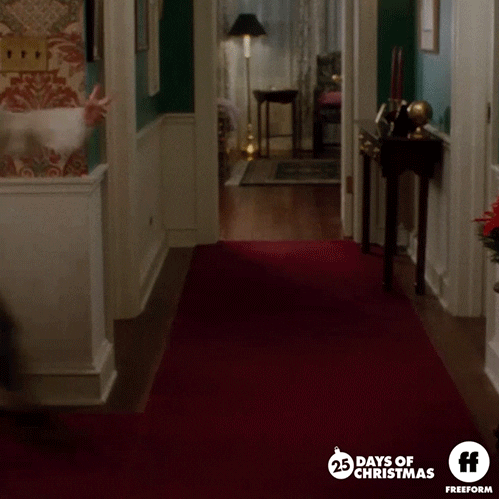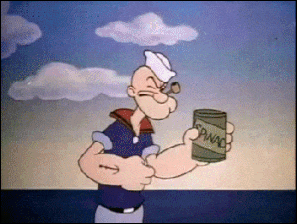Clients and customers are the lifeblood of a business, right? And a well-designed website is one way you can keep that blood running on tap. Ewww . . . okay, too much. But you get what we’re saying.
We keep seeing business websites with glaring problems that make ideal clients or customers run screaming for the hills (read: straight into the arms of the competition).

You’re doing tons of work to get eyeballs on your website. The last thing you want is to scare your visitors away by making costly mistakes.
Lucky for you, we’ve got your back. Here are 7 common website mistakes you need to avoid.
Website Mistake #1: Headlines that don’t provide context and value
We get it – everybody wants to sound interesting. It’s great to sound clever and have eye-catching headlines, but you don’t want to sound so clever that people are missing the point.
Your headlines have one job: to make people read the next line. Well, that’s really the job of every single sentence on your website. But it’s your headlines that make people decide to stick around in the first place.
You should:
- Make it easy for people to know what to expect next.
- Tell them why they should even care to keep reading.
- Intrigue them with a question or shocking statistic.
Do whatever you need to get people to keep reading.
Friendly reminder: Search engines scan headlines to understand what each web page is about. Creating headlines that both your clients and search engines can understand is what we call #winning!
Website Mistake #2: Your navigation isn’t intuitive
We’ve all been there – wondering where in the world to find the info we need on someone’s site. You get stuck in an infinity loop trying to find “that one thing” before clicking off and calling it a day.
You’re probably like the 37% of users who leave a website because the site navigation sucks.
Why are businesses making it hard for people to work with them? We don’t really know. But we’re going to help you not be one of them.
So here’s what to do: Pretend you know nothing about your company. You have no idea what to do next from the minute you land on your website.
Are you being practically hand-held from the first page all the way through the first steps to work with your company?
If that answer is no you need to get that fixed… like yesterday.
Website Mistake #3: You use language that’s unfamiliar to your audience
We all love to sit down and read a book filled to the brim with jargon and technical language that goes over our heads, right? Ha! Totally kidding.
Here’s the thing – the people visiting your website want to learn more about what you do. They want to *get* what you’re saying. If those people can’t understand what you do, or whether or not you can help them, they definitely won’t understand why they should choose to work with you.
You can usually fix this by writing at anywhere between a 6 to 10th-grade reading level, depending on who is in your audience. (Hemingway App is great for this if you need a tool!)
You’re great at what you do and you want people to know. But when you use language that’s too high level for them, you’re going to lose them. Your audience is smart, but your job is to make their lives easier, not give them a whole new language to learn.
Website Mistake #4: Your copy is all feature-based (and ignores the transformation)
Your clients or customers need to trust that you can give them what they need. From line one on your website, you need to answer the age-old question: “What’s in it for me?” Why should your audience work with you versus Jane Doe next door?
Popeye didn’t eat spinach because it’s a good source of vitamins, riboflavin, and folate (yea, we looked it up) – he did it to pop ‘what’s his face’ in the eye and win over Olive Oyl.
That’s how you want your audience to feel. Yes, you need the logical piece (features – spinach is nutritious), but it’s even more important to explain what those features can really mean for them (benefits – strongest muscles).

Transformational copy makes it easy for people to understand the value of working with you.
Website Mistake #5: Having too much copy
Ok, brace yourself for a quick crash course on bounce rates.
Bounce rates describe how fast people leave your web pages. The less time they spend on it, the higher the bounce rates. It sucks because people don’t get to the meat of your content — and search engines won’t keep sending visitors to a website that doesn’t seem helpful.
How to fix this?
You need to have the “right” amount of copy on your website to keep visitors engaged. What this means varies for different businesses and even for each web page. Focus on communicating in the most helpful way what you do and doing so in a way that your audience understands.
Fun Fact: Every additional 100 words on a page gets visitors to stick around for an extra 4.4 seconds.
That doesn’t mean you need to make your web pages a boring, extremely long wall of text, though. Too much copy without value will bore your website visitors and they’ll bounce.
You want visitors to stick around. When they do, they’ll pay attention to what you have to say and then click on the right links or buttons (read: more sales)!
A good rule of thumb: Have you said what is most important to someone above the fold? Did you answer everything you needed to on the page? If the answer is yes, you likely have found the “Goldilocks zone” for copy.
Website Mistake #6: Your copy sounds a bit narcissistic (sorry, not sorry)
Have you ever come across a website that just seemed so focused on the business or owner’s accolades, awards, etc.? They’re all “You should work with us because we’re amazing!” Every page, including the supercritical About page, is filled with “I” and “We”-centric copy.
We’re not saying that impressive people don’t run these companies. It’s just that those impressive stats aren’t directly linked to how they help their clients.
You can increase conversions by up to 47% just by using more “you” in your copy. (You as in them, not you as in you.)
So instead of just saying, “We won an award in [an amazing thing]”, tell them what it means for them . . . “Our award-winning service is design to help you get [even more amazing results].”
That’s how you can share your wins in a way that makes people want to work with you.
Website Mistake #7: Not strategically using your testimonials
The importance of testimonials goes without saying. Where businesses seem to miss the mark is in how they’re sharing social proof.
See, they may just throw them up on a testimonials page, in a scrolling carousel at the bottom of the home page, or randomly splashed across a page.
But what if you knew how to use them even more strategically?
Leverage your hard-won testimonials by:
- Supporting key benefits. For example, say your copy mentions you help your customers get things done in half the time. Put a testimonial that speaks to this benefit right after to help emphasize the point.
- Formatting testimonials properly. So, Suzie thinks you’re terrific and literally the best thing since sliced bread? Use bold or italics to highlight the most important words in her testimonial. You could also design graphics or models on your site to call special attention to these reviews. (Bonus points if it ties into your key benefits!)
- Adding descriptive titles. Do you want people to quickly pick up on why your testimonial matters to them? Try adding titles highlighting the key benefits clients mention in the testimonial.
Want to get “write web copy” off your to-do list??
Sure, we just gave you a ton of tips to make your website work for you… but that doesn’t mean you have the time to write your copy or even review what’s already written. You’re busy AF and your website is mission-critical.
That’s why we’re here.
We can audit your website, create a plan to eliminate website mistakes, and optimize every page so your site visitors start to believe in love at first sight.
If you’re ready to create a spook-free website that draws in your ideal clients, set up a call with our team to chat about how we can help you. We promise we don’t bite. Much.


